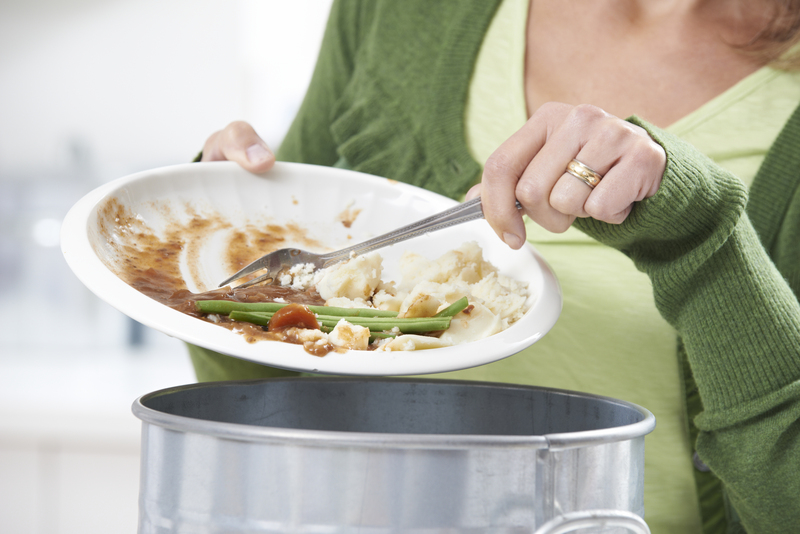The Do's and Don'ts of Disposing and Recycling Pots and Pans
When it comes to recycling old cookware or getting rid of worn-out kitchen pots and pans, the process isn't as simple as tossing them into your curbside recycling bin. Understanding how to properly dispose of pots and pans is crucial to ensure environmental sustainability and responsible waste management. In this comprehensive guide, we'll walk you through the best practices for disposing and recycling cookware, highlighting what you should and shouldn't do with old kitchenware.
Why Proper Pots and Pans Disposal Matters
Every year, millions of nonstick, aluminum, stainless steel, cast iron, and copper pots and pans are discarded worldwide. Improper disposal can lead to environmental hazards, while responsible recycling of cookware helps conserve resources and minimizes landfill contributions. By following recommended practices, you can reduce your household's carbon footprint and maybe even give your kitchenware a second life.

Understanding Materials: Can All Cookware Be Recycled?
Not all pots and pans are created equal--both in terms of performance and recycability. The recycling process and options will depend on what your pans are made from:
- Aluminum: Lightweight and common, often recyclable in scrap metal programs.
- Stainless Steel: Durable and valuable to scrap metal facilities.
- Cast Iron: Hefty and long-lasting, perfect for recycling or repurposing.
- Copper: Highly sought-after; fetches a premium at many scrap yards.
- Nonstick (Teflon-coated): Can be tricky; check local recycling rules due to coating.
- Enamel-coated: Similar to nonstick, sometimes not recyclable due to the coating.
Tip:
If your pans are in good condition, consider donation or upcycling before recycling or trashing them.
The Do's: Best Practices for Disposing and Recycling Pots and Pans
-
Do Check Manufacturer Take-back Programs
Some cookware brands offer take-back or recycling programs for their products. Companies like Calphalon and GreenPan have been known to encourage recycling of their old pots and pans through mail-in services, allowing them to be responsibly melted down and remade.
-
Do Remove Non-metal Parts
Before recycling, remove any plastic, silicone, or wooden handles and discard or recycle them separately if possible. Scrap metal yards prefer clean metal to avoid contamination in the melting process.
-
Do Contact Your Local Scrap Metal Facility
Metal is valuable--even for rusty or dented cookware. Scrap metal recycling centers often accept all metal types, including cookware, regardless of condition. Always call ahead to check what materials are accepted and in what condition.
-
Do Clean Your Cookware First
Remove any food residue, oils, and dirt before recycling. Dirty pans can sometimes be rejected by recycling facilities due to contamination concerns.
-
Do Donate If Usable
If your cookware is still functioning--especially if it's gently used--consider donating to thrift stores, shelters, community centers, or posting in local Buy Nothing or Freecycle groups. Reusing is the highest form of recycling!
-
Do Repurpose or Upcycle
Old pots and pans can be creatively repurposed around the house or garden: planters, storage bins, birdbaths, or craft projects. Get creative and share with your community.
-
Do Separate Nonstick or Coated Cookware
Nonstick coatings like Teflon are not always recyclable and may require special disposal. Check with your municipality or recycling authority regarding local rules for coated items.
The Don'ts: Common Mistakes When Disposing of Pots and Pans
-
Don't Toss Them in Your Blue Bin
Standard curbside recycling programs usually do not accept pots and pans. Their size, material composition, and coatings can damage recycling machinery or contaminate recycling streams.
-
Don't Discard in Regular Trash If Avoidable
Landfilling cookware wastes valuable metals and contributes to overflowing landfills. Always seek a more sustainable option first, such as scrap yards, secondhand shops, or specialty recycling events.
-
Don't Mix Materials
If you're recycling at a facility that sorts by metal type, make sure to separate aluminum pots from stainless steel, copper, or mixed-metal cookware to help the recycling process.
-
Don't Ignore State or Local Regulations
Some states and municipalities have specific rules regarding nonstick coatings, hazardous materials, or large metal goods. Always check online or with local authorities before disposal.
-
Don't Forget to Check Warranty
If your pots or pans broke due to manufacturing defects, some brands offer repairs, replacements, or take-back options. Save yourself money and reduce waste by exploring your warranty!
Special Considerations for Nonstick and Teflon Cookware
Nonstick pans (Teflon or PTFE-coated) require special attention. The coating can be harmful if incinerated or improperly processed:
- Do not send nonstick pans to scrap yards unless advised they'll accept them.
- Do check if your city offers a separate hazardous waste, bulky item, or specialty metal drop-off.
- Do try contacting the manufacturer--some offer return programs for their nonstick products.
- Do not attempt to burn off the coating yourself.
How to Recycle Metal Pots and Pans Step-By-Step
- Inspect and Sort: Determine material type--magnet test for steel, shiny pink for copper, light and dull for aluminum.
- Remove Non-metallic Components: Unscrew or break off wooden/silicone handles, lid knobs, or plastic elements.
- Clean Thoroughly: Wash and scrub away all burnt-on food, grease, or other contaminants.
- Contact Your Local Scrap Yard: Ask about material requirements, operating hours, and procedures for drop-off.
- Transport Safely: Avoid sharp edges, and pack similar metals together for convenience.
- Complete Transaction: Some scrap yards may pay you for certain metals.
Creative Ways to Reuse Old Pots and Pans
Not all pots and pans need to leave your home. Before considering recycling, upcycling is a fun and eco-friendly option:
- Plant Pots: Create rustic garden planters.
- Bird Baths or Feeders: Use larger pans outdoors for wildlife.
- Storage Containers: Organize your garage, shed, or workshop with old pots.
- Decorative Art: Paint and hang old pans as creative wall art.
- Play Kitchen Accessories: Clean and give to children for imaginative play.

FAQs on Kitchen Cookware Recycling and Disposal
Can I put pots and pans in my curbside recycling bin?
Generally, no. Most curbside programs don't accept cookware due to the risk of machinery damage. Always use a scrap metal yard or special recycling collection event.
How do I know if my pans are recyclable?
Aluminum, stainless steel, copper, and cast iron are almost always accepted at scrap yards. Pans with coatings (nonstick or enamel) may need special disposal.
Will scrap yards take damaged or rusty cookware?
Most scrap yards will accept metal cookware in any condition, but it must be free of non-metal parts.
Where can I donate usable cookware?
Try local thrift stores, charities, women's shelters, soup kitchens, and online groups such as Buy Nothing, Freecycle, or Craigslist.
What should I do with glass lids?
Glass lids are usually not recyclable with glass bottles and jars. If undamaged, consider donating; otherwise, consult your local waste authority about disposal options.
Promoting Sustainability in the Kitchen: Final Thoughts
Knowing the do's and don'ts of disposing and recycling pots and pans empowers you to make environmentally responsible choices while freeing up space in your kitchen. Whether you're upgrading to new cookware or simply decluttering, following these guidelines ensures that you reduce waste and support sustainable living. As kitchen technology evolves, keep yourself informed about recycling options and emerging disposal programs from brands and local governments.
Key Takeaways:
- Never throw old pots and pans in your curbside recycling bin or general trash if alternatives exist.
- Seek out scrap metal facilities or participate in manufacturer recycling programs for proper disposal.
- Remove all non-metal parts before recycling, and always clean your cookware.
- Donate usable items or upcycle creatively before recycling.
- Check local regulations and manufacturer guidelines for handling nonstick or specialty coated cookware.
By adopting these habits, you'll enjoy peace of mind knowing your old cookware was kept out of landfills, properly recycled, or given a brand-new purpose. Rethink before you toss your pots and pans--your kitchen cleanup can help the planet too!